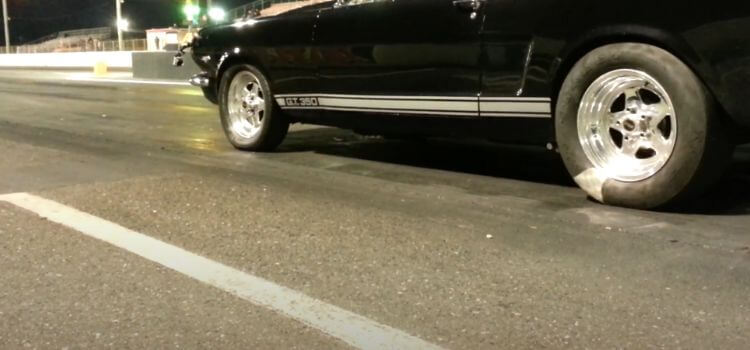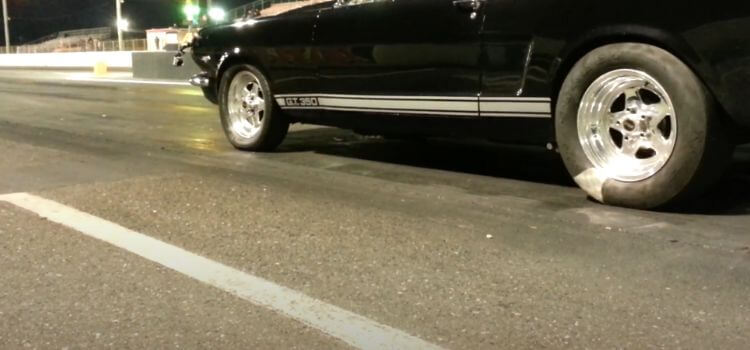As an Amazon Associate, I earn from qualifying purchases
Wheel hop is a common issue that can occur in vehicles, particularly during high-performance driving or acceleration. It is often caused by a combination of factors such as tire pressure, suspension setup, and the condition of the road surface. Understanding the root causes of wheel hop is crucial in preventing damage to your vehicle and ensuring a smooth driving experience. In this post, we will explore the various factors that can contribute to wheel hop and provide tips on how to address and prevent this issue.

Inadequate suspension
occur in vehicles with inadequate suspension. This phenomenon is caused by the rear wheels of a vehicle rapidly alternating between gripping and losing traction with the road surface. This can lead to an uncomfortable and potentially damaging experience for the driver and the vehicle itself. It is important to address this issue by upgrading the suspension system of the vehicle to prevent wheel hop from occurring. This may involve replacing or upgrading components such as shocks, springs, and control arms to improve the overall stability and performance of the vehicle.
Improper tire pressure

occur when a vehicle’s tires have improper pressure. This can lead to the wheels losing traction and bouncing up and down rapidly, causing a jerking motion in the car. It can be dangerous and damaging to the vehicle’s suspension and drivetrain. Proper tire maintenance and ensuring that tire pressure is at the recommended level can help prevent wheel hop and keep your vehicle running smoothly.
Worn out or damaged suspension components
occurs when the tires lose traction and then regain it quickly, causing the suspension to compress and release rapidly. This can be caused by worn out or damaged suspension components, improper tire pressure, or aggressive acceleration. It can also be exacerbated by uneven road surfaces or excessive torque being applied to the wheels. To prevent wheel hop, it’s important to regularly inspect and maintain your suspension components and tires, and to drive carefully and avoid aggressive acceleration on uneven surfaces.
Improper wheel alignment

Wheel hop is typically caused by improper wheel alignment, worn suspension components, or unbalanced tires. When the wheels are not aligned properly, they can cause the car to vibrate and hop when driving at high speeds or making sharp turns. Worn suspension components can also lead to wheel hop as they can cause the wheels to move in unintended ways. Unbalanced tires can also contribute to wheel hop as they can create uneven weight distribution and cause the car to bounce and hop while driving. It’s important to address these issues to ensure a smooth and safe driving experience.
Excessive power or torque to the wheels
Wheel hop is often caused by excessive power or torque being sent to the wheels, which can cause them to lose traction and bounce or hop. This can be especially common in high-performance vehicles or those with modifications to increase power. When the wheels lose traction and hop, it can put stress on the suspension and drivetrain components, leading to potential damage. To prevent wheel hop, it’s important to properly manage power delivery and ensure that the vehicle’s suspension and drivetrain are in good condition. Additionally, using traction control systems and high-quality tires can also help reduce the likelihood of wheel hop.
Uneven road surface
Wheel hop is typically caused by uneven road surfaces, especially when driving at high speeds or making quick turns. When the wheels lose contact with the road surface and then regain it, it can result in the bouncing or hopping motion of the vehicle. This can be dangerous and cause damage to the suspension and drivetrain components.
Improper weight distribution
Wheel hop is often caused by improper weight distribution on the vehicle, leading to the tires losing traction and causing the wheels to hop or bounce. This can also be caused by a lack of suspension travel, resulting in the tires not staying in contact with the road surface. Upgrading to a better suspension system or making adjustments to the vehicle’s weight distribution can help prevent wheel hop. Additionally, ensuring that the tires are properly inflated and in good condition can also help minimize the occurrence of wheel hop.
Improper shock absorber settings
Wheel hop can be caused by a number of factors, including improper shock absorber settings, uneven road surfaces, and excessive torque from the engine. When the tires lose and regain traction rapidly, it can cause the wheels to hop, leading to a loss of control and potentially damaging the suspension components. Properly adjusting the shock absorber settings and ensuring even road surfaces can help reduce the risk of wheel hop and keep your vehicle running smoothly.
Conclusion
wheel hop is typically caused by a combination of factors, including inadequate suspension and drivetrain components, improper tire pressure, and excessive power to the wheels. Addressing these issues through upgrades and adjustments can help reduce or eliminate wheel hop and improve the performance of your vehicle.
As an Amazon Associate, I earn from qualifying purchases
Leave a Reply